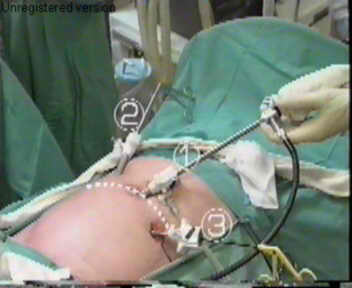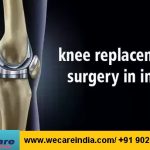Laparoscopic inguinal hernia repair in india
Laparoscopic hernia repair is similar to other laparoscopic procedures. General anesthesia is given, and a small cut (incision) is made in or just below the navel. The abdomen is inflated with air so that the surgeon can see the abdominal organs.
A thin, lighted scope called a laparoscope is inserted through the incision. The instruments to repair the hernia are inserted through other small incisions in the lower abdomen. Mesh is then placed over the defect to reinforce the abdominal wall.
There are many things to consider when deciding if you should have inguinal hernia repair surgery, such as whether your hernia is incarcerated or strangulated and whether you have other conditions that need to be addressed before hernia repair surgery is appropriate.

Most people who have laparoscopic hernia repair surgery are able to go home the same day. Recovery time is about 1 to 2 weeks. Studies have found that people have less pain after laparoscopic hernia repair than after open hernia surgery.
Why It Is Done?
Surgical repair is recommended for inguinal hernias that are causing pain or other symptoms and for hernias that are incarcerated or strangulated. Surgery is always recommended for inguinal hernias in children.
Laparoscopic surgery repair may not be appropriate for people who : –
- Have an incarcerated hernia.
- Cannot tolerate general anesthesia.
- Have bleeding disorders such as hemophilia or idiopathic thrombocytopenic purpura (ITP).
- Are taking medicines to prevent blood clotting (blood thinners or anticoagulants, such as warfarin).
- Have had many abdominal surgeries. Scar tissue may make the surgery harder to do through the laparoscope.
- Have severe lung diseases such as emphysema. The carbon dioxide used to inflate the abdomen may interfere with their breathing.
- Are pregnant.
- Are extremely obese.
Laparoscopic hernia repair usually is not done on children. But a laparoscope may be used during open hernia repairs in children to explore the opposite groin for a hernia. This can be done by inserting the laparoscope into the side that is being operated on and looking at the opposite side. If a hernia is present, the surgeon can repair both sides during the same operation.
How Well It Works
The chance of a hernia coming back after laparoscopic surgery ranges from 1 to 10 out of 100 surgeries done.
Laparoscopic surgery has the following advantages over open hernia repair : –
- Some people may prefer laparoscopic hernia repair because it causes less pain and they are able to return to work more quickly than they would after open repair surgery.
- Repair of a recurrent hernia often is easier using laparoscopic techniques than using open surgery.
- It is possible to check for and repair a second hernia on the opposite side at the time of the operation.
- Because smaller incisions are used, laparoscopy may be more appealing for cosmetic reasons.
Risks
Some people may need special preparation before surgery to decrease the risk of complications.
These are people who : –
- Have a history of blood clots in large blood vessels (deep vein thrombosis).
- Smoke.
- Take large doses of aspirin. Aspirin slows blood clotting and may increase the chances of bleeding after surgery.
- Take blood thinners (such as warfarin, heparin, and enoxaparin).
- Have severe urinary problems, such as those caused by an enlarged prostate gland.
Risks of laparoscopic hernia repair include : –
- Pain in the cord that carries sperm from the testicle to the penis (spermatic cord), in the testicles, or in the thighs.
- Fluid (seromas) or blood (hematomas) in the scrotum, the inguinal canal, or the abdominal muscles.
- Inability to urinate (urinary retention) or bladder injury.
- Infection from the mesh or stitches.
- Scar tissue formation (adhesions).
- Injury to abdominal organs, blood vessels, and nerves.
- Numbness in the thigh.
- Pain in the thigh (nerve entrapment).
- Injury to the testicle, causing testicular atrophy (rare).
- Recurrence of the hernia (usually related to the mesh applied during surgery being too small to cover the groin area or the mesh not being stapled well).
What to Think About
Doctors and researchers of laparoscopic hernia repair say that laparoscopy has not yet been proved to offer long-term advantages over open surgery. They stress the need for more studies on laparoscopic safety and effectiveness in hernia repair.
Laparoscopic hernia repair is different from open surgery in the following ways : –
- A laparoscopic repair requires several small incisions instead of a single larger cut.
- If hernias are on both sides, both hernias can be repaired at the same time without the need for a second large incision. Laparoscopic surgery allows the surgeon to examine both groin areas and all sites of hernias for defects. In addition, the patch or mesh can be placed over all possible areas of weakness, helping prevent a hernia from recurring in the same spot or developing in a different spot.
- Most of the time, a person must receive general anesthesia for laparoscopic repair. Open hernia repair can be done under general, spinal, or local anesthesia.
Laparoscopic repair of a hernia is more expensive than open surgery because of the increased costs associated with slightly longer operating room time and the cost of laparoscopic technology.











